17. Applications and Implications
Final Project Checklist
- What will it do ?
- Who's done what beforehand?
- What will I design?
- What materials and components will be used?
- Where will they come from?
- How much will they cost?
- What parts and systems will be made?
- What processes will be used?
- What questions need to be answered?
- How will it be evaluated?
What's the project
My project is an automatic cat food dispenser. The cat's food bowl is placed in a compartment protected by a lid. This compartment is attached via a power cable to a tower in the shape of a cat's head, which contains most of the electronics needed to operate the dispenser.
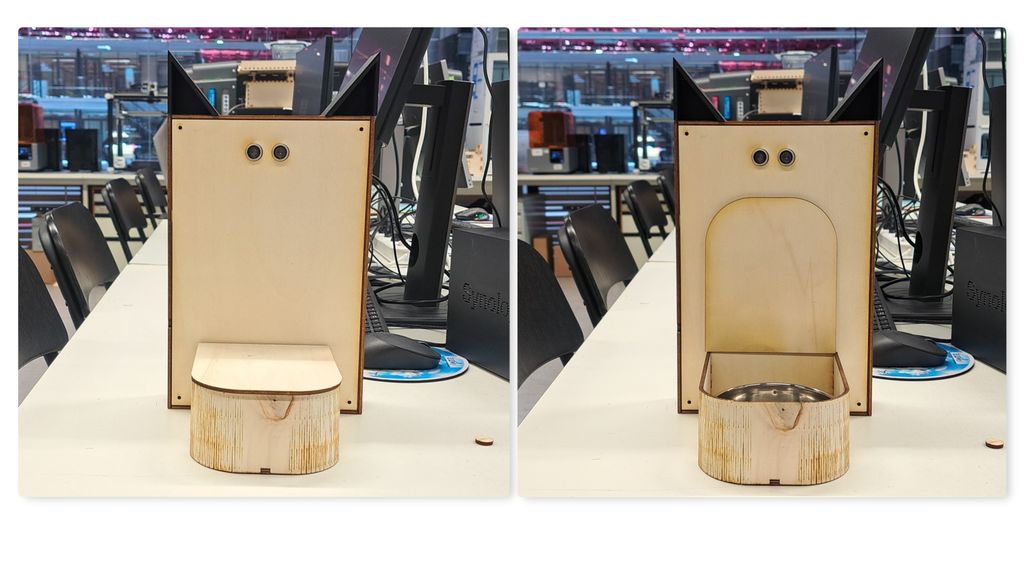
How it works
- Quantity of food available :
- When the bowl of food is filled, the weight recorded by a force sensor underneath the bowl is sent to the microcontroller, which translates this weight into a green light signal that appears, via LEDs, in the tower's ears.
- If the weight of food in the bowl reaches half the maximum possible weight, the light will turn yellow.
- If the weight of food in the bowl reaches a third of the maximum possible weight, the light turns red.
- If the weight of food in the bowl reaches 10% of the maximum possible weight, the light remains red and will start to flash.
- Opening of food bowl compartment :
- The lid of the compartment housing the food bowl opens when the animal or human slave comes within 20cm of the dispenser, thanks to a distance sensor installed in the upper part of the tower (and therefor representing the tower cat's eyes) and a servo motor concealed beneath the lid.
- When the animal or human slave moves away from the dispenser, the lid closes again after a 1-minute delay.
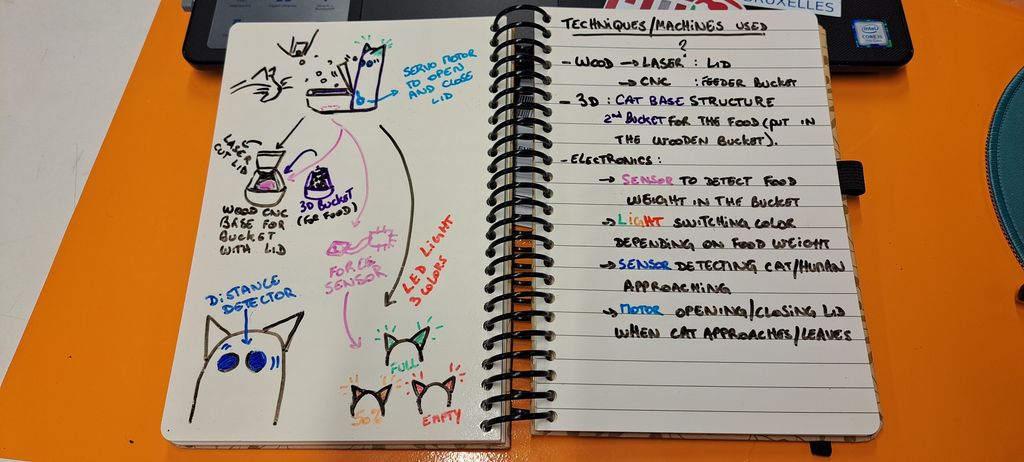
How it's built
The basic shapes for the tower and food compartment prototypes were created from existing templates on a laser-cut box generator website, Festi. I modified these boxes according to the sizes and specifications I needed for my project by using Inkscape and the laser cutter program, Gravostyle.
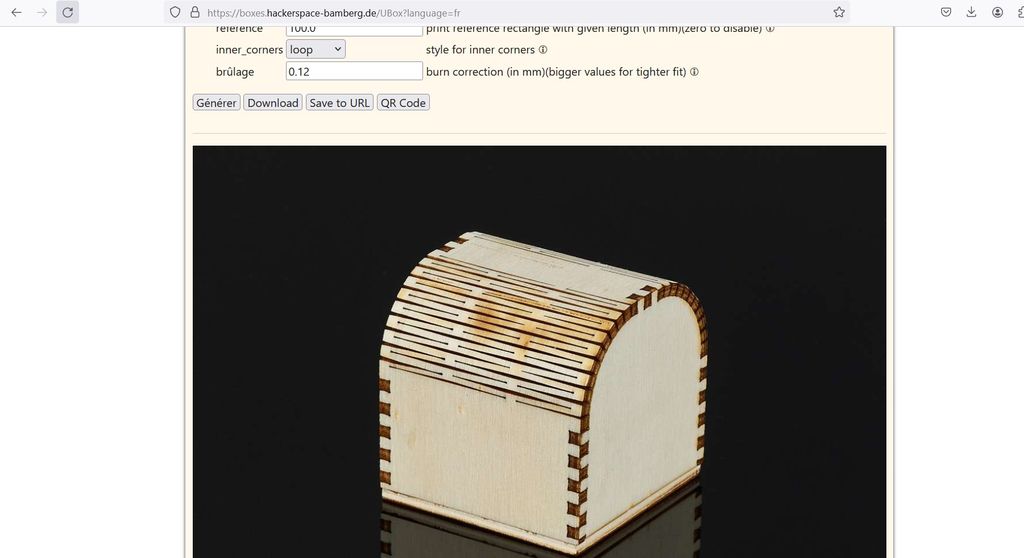
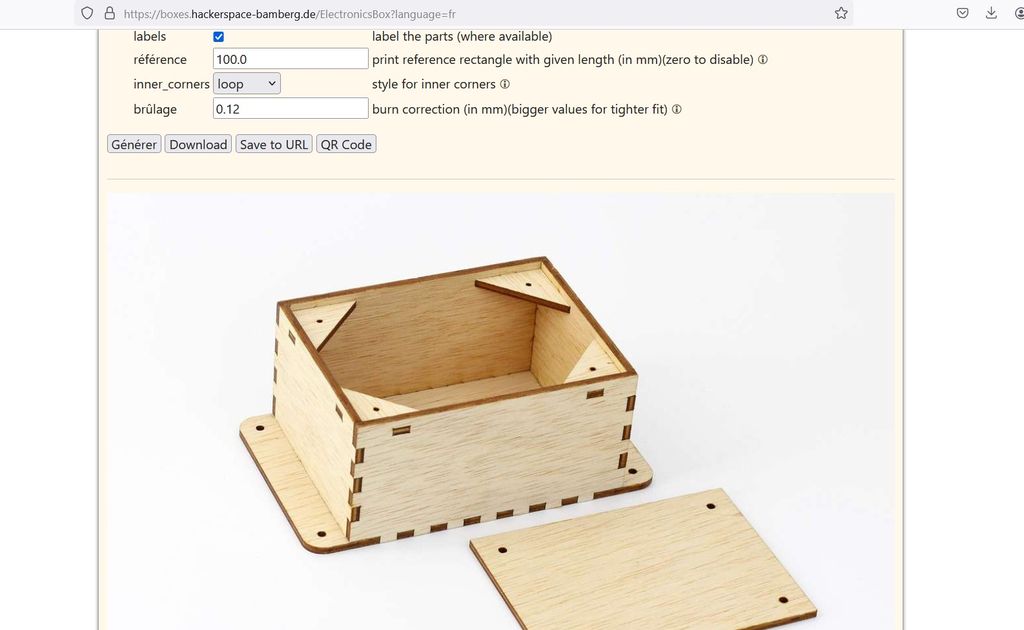
I also used Tinkercad to design the 3D prints of the ears at the top of the tower, in which the LEDs will be housed.
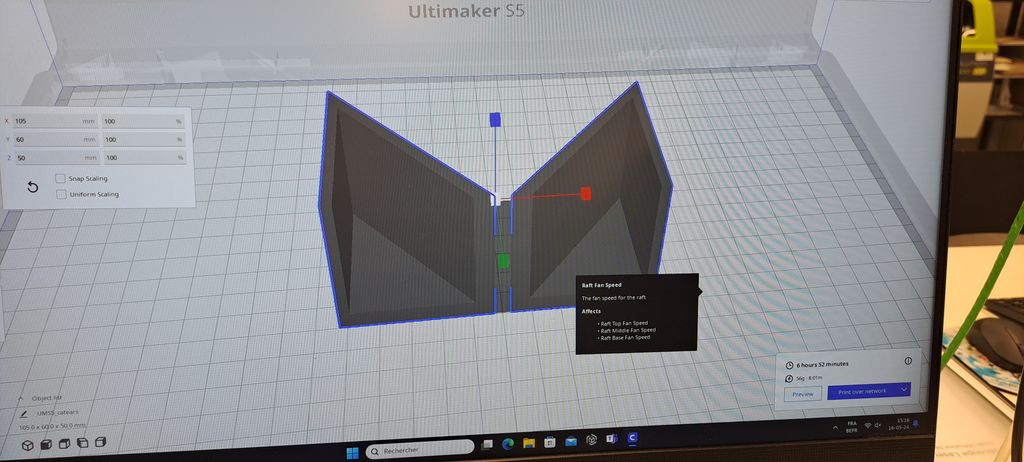
Many of the parts holding the electronic components were 3D printed from opensource files found on websites like Thingiverse.
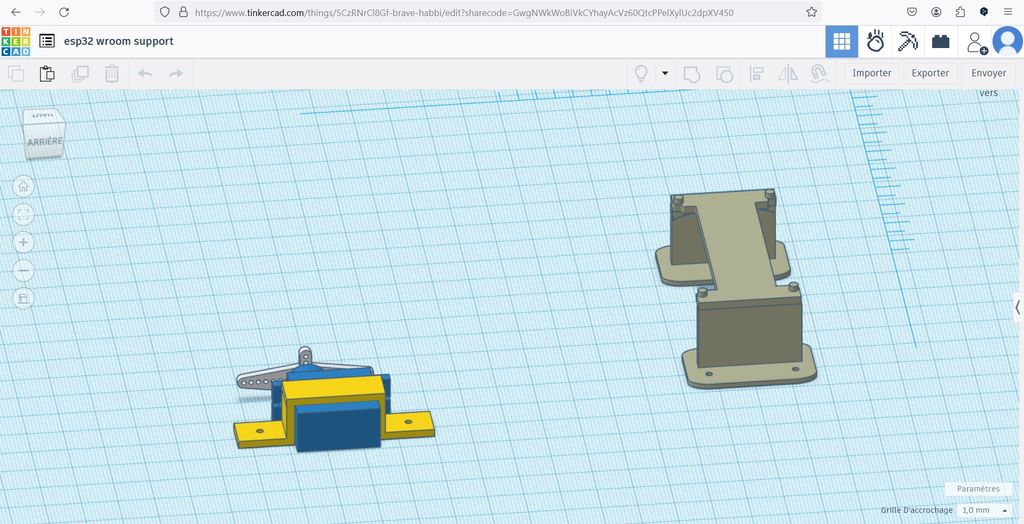
Materials used (mostly bought on Amazon)
- 2x Laser cutted prototype box = ~10€
- 2x 5mm foggy round 4 pin RGB LED Light Emitting Diode - Common cathode = ~0.10€/LED → ~0.20€ total
- 1x HC-SR04 Ultrasonic Sonar Distance Sensor = ~2€
- 1x ESP32 Wroom = ~9€
- 1x AZ-Delivery Micro Servo Motor 9g compatible with SG90 = ~3€
- 1x Force Sensitive Resistor - 20g to ~2kg = ~4€
- 1x Powerbank = ~20€
- Wires (~8) = ~0 05€/wire → ~1€ total
- 3D printed mounting brackets in PLA
- 3D printed ears in ABS
- Screws
~50€ in total to build the cat feeder prototype
Challenges in the building
- Fitting the pieces together
- Measuring food weight in bowl (without the bowl's own weight)
- Force required to lift the bowl lid
- Movement of the lid regarding the distance (with or without waiting time)
- Ergonomic arrangement of parts
- Hide electronic components
Points of positive evaluation of the project
- Good opening and closing operation
- Right weight measurements
- Right color display
- Clean wiring
- Practicality
Files and resources
Files
Resources